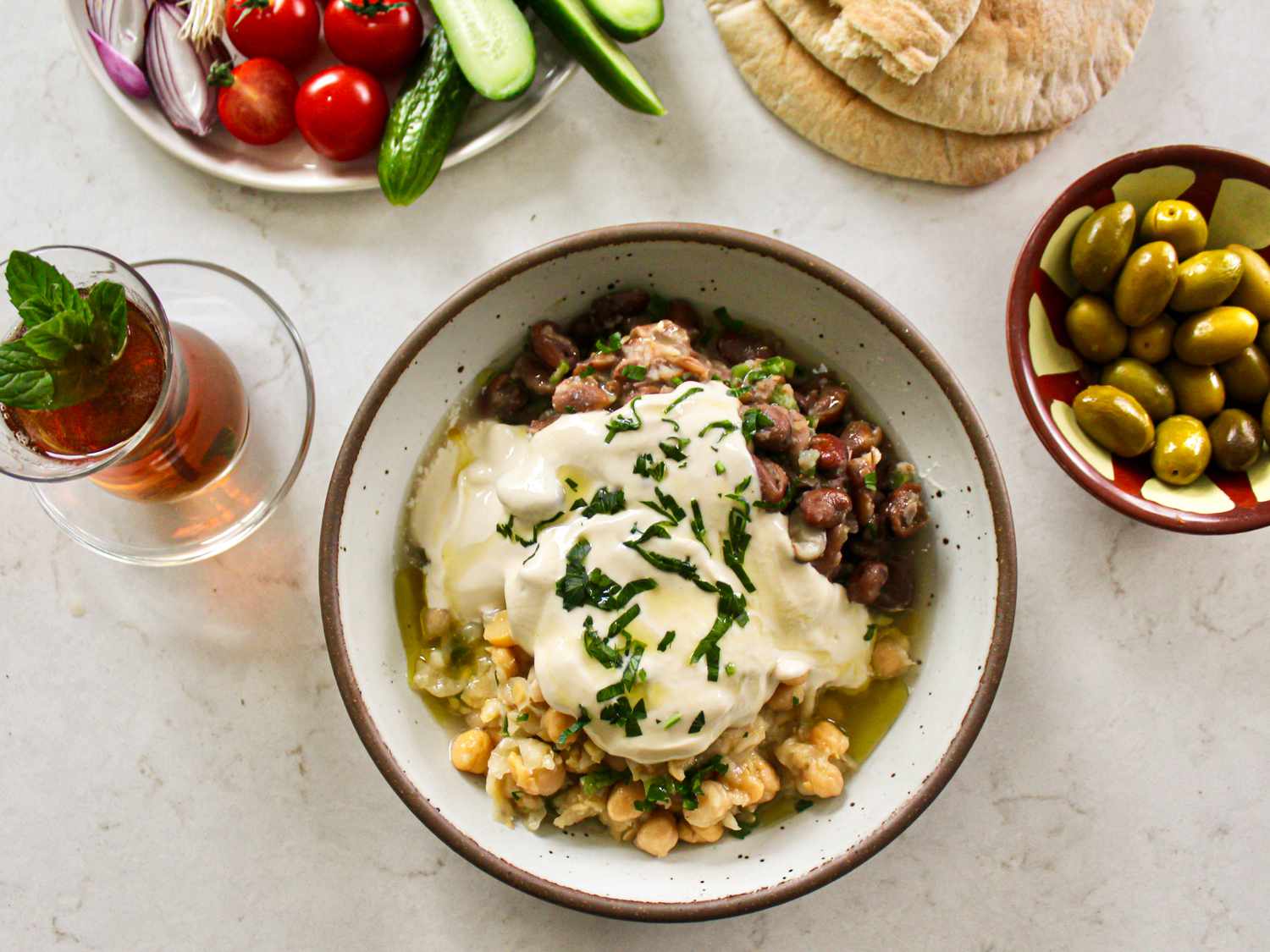Why It Works
- Cooking the chickpeas and fava beans from scratch gives you better texture and a more flavorful broth to work with.
- Serving the fava beans and chickpeas next to each other rather than mixed together (as is often the case) makes for a more visually appealing presentation without compromising on flavor.
- The bright tahini sauce, fresh parsley, and green chiles break through the heaviness of the beans, creating a balanced dish.
If you’ve noticed that many Arabic dishes are named based on where they come from (e.g. Qudsiyeh from al-Quds, or Jerusalem), the vessel they are cooked in (qidreh, which means pot), or manner in which they are prepared (maqlubeh means “flipped over”), you won’t be surprised to learn that “makhloota” simply means mixed together. What is actually mixed together, however, can vary depending on region or locale. In Lebanon, it traditionally refers to a dish of boiled mixed legumes including any combination of chickpeas, kidney beans, fava beans, lentils, wheat, and bulgur.
The version of makhloota I am sharing here is one I came across in Palestinian hummus shops across the Galilee region, which borders Lebanon. Made with a combination of cooked chickpeas and fava beans, it appears to be a version of Lebanese makhloota. The beans are usually lightly mashed, then dressed with a lemony garlic sauce. The two legumes are served on the same plate, either adjacent to or on top of each other. Some places serve this mixture on a bed of hummus b’tahini, while others will simply drizzle a tahini sauce on top.
I first tried this dish in the Galilee. I was probably a teen; I remember making a face at my parents when they ordered it as if to say: Why order such a basic dish? It’s just beans mixed together! But I also remember the first bite because it caught me by surprise—and was a good lesson in how a simple or basic dish is often just as, if not more, delicious than a fussy or complicated one.
To this day, I often prefer makhloota on its own, heavy on the garlic and lemon, with some green chiles and parsley on the side. It’s the way Hummus Issa, my go-to spot in Akka, serves it. But that’s not to say there isn’t a time and place for elevating the dish with a generous drizzle of tahini sauce on top, which is why I have included this option in the recipe as well. Regardless of which option you choose or find yourself in the mood for, the one thing I recommend (as always!) is to boil extra of both the favas and the chickpeas and freeze the additional portions because you can then make makhloota in the time it takes to reheat these legumes.
The recipe calls for you to mix the fava and chickpeas separately with the flavorings for a prettier presentation, but for a quick weeknight dish you can certainly mix everything together in the same bowl. If using canned beans and you don’t mind the presentation, you could also heat them both together. However you make your makhloota, be sure to serve it with plenty of bread to scoop it up, and make sure to get a bit of everything in each bite.


